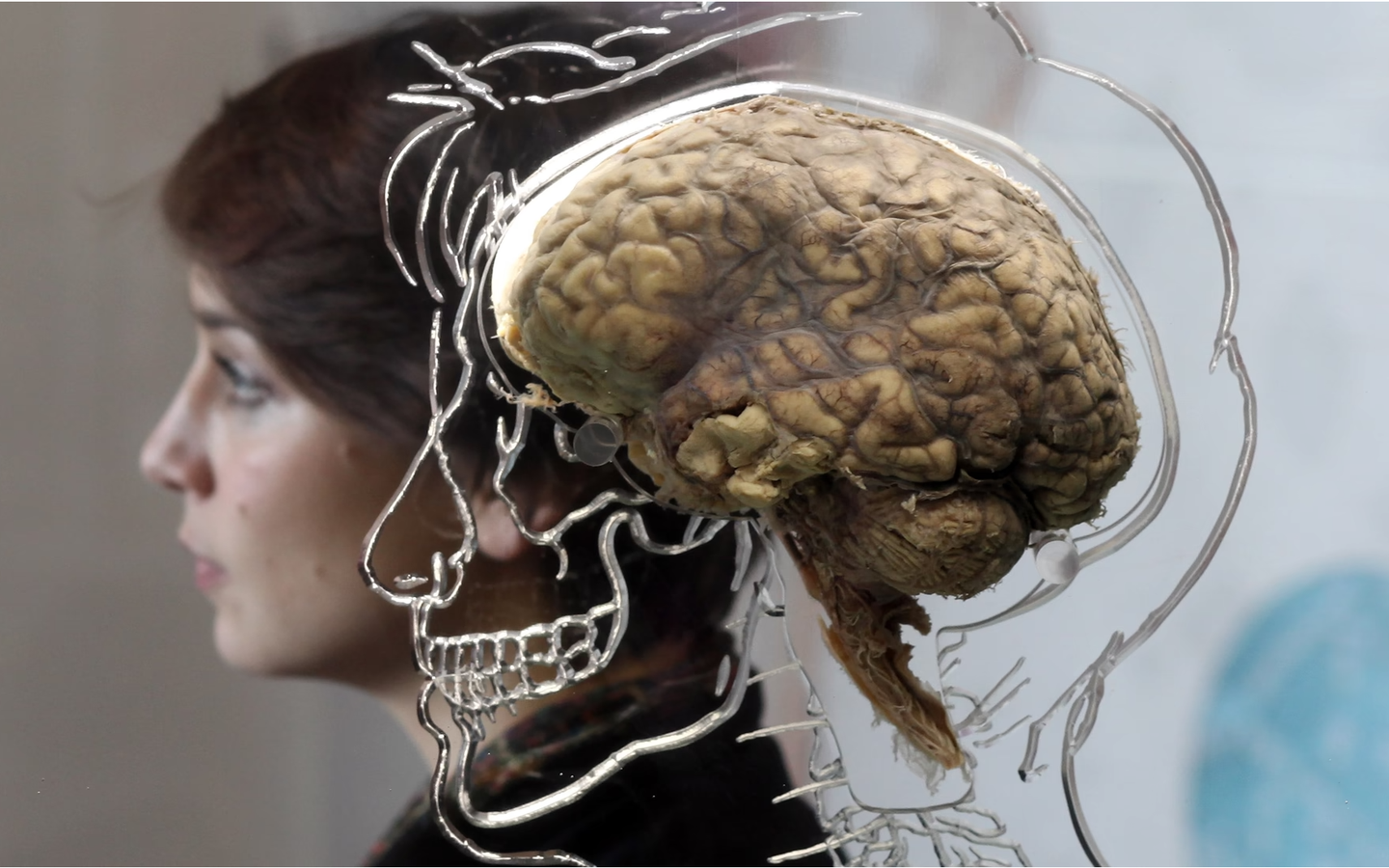Researchers unlock the secret to a longer life through brain cells
This study not only deepens our understanding of the aging process but also raises tantalizing prospects for future interventions.

Research has illuminated a pivotal communication pathway in mice that links the brain and the body's fat tissue. (CREDIT: Matt Cardy / Getty)
In recent years, scientific research has been peeling back the layers of aging, revealing that the intricate lines of communication between our body's organs are the architects of our vitality.
Like an orchestra, our organs work in harmony when the communication channels are open and efficient. However, as time marches on, these lines of communication degrade, leaving our organs starved for the molecular and electrical messages essential for their proper function.
A groundbreaking study conducted at the Washington University School of Medicine in St. Louis has illuminated a pivotal communication pathway in mice that links the brain and the body's fat tissue, forming a feedback loop crucial for energy production throughout the body.
This research suggests that the gradual deterioration of this feedback loop might be a contributing factor to the myriad health issues associated with natural aging.
Related Stories
Published in the prestigious journal Cell Metabolism, this study not only deepens our understanding of the aging process but also raises tantalizing prospects for future interventions capable of preserving this crucial feedback loop and slowing the inexorable march of time.
The team of researchers zeroed in on a specific set of neurons nestled in the brain's hypothalamus. These neurons, when activated, transmit signals to the body's fat tissue, prompting it to release energy. Through meticulous genetic and molecular techniques, the scientists engineered mice in which this communication pathway remained consistently open after reaching a certain age.
Astonishingly, these mice exhibited increased physical activity, signs of delayed aging, and longer lifespans compared to their counterparts in which the same pathway gradually withered away with age.
A new study from Washington University School of Medicine in St. Louis has identified a key feedback loop between the brain and the fat tissue that governs aging in mice. Key neurons (shown in green) in the dorsomedial hypothalamus of the brain activate fat tissue to produce cellular fuel. When these specific neurons are activated in older mice, they live longer than control mice. (CREDIT: Kyohei Tokizane)
Senior author Shin-ichiro Imai, MD, PhD, the Theodore and Bertha Bryan Distinguished Professor in Environmental Medicine and a professor in the Department of Developmental Biology at Washington University, enthusiastically stated, "We demonstrated a way to delay aging and extend healthy life spans in mice by manipulating an important part of the brain."
He emphasized the significance of their findings by highlighting that prior work in extending lifespan had been confined to simpler organisms like worms and fruit flies.
With age, the researchers found that the protein Ppp1r17 tends to leave the nucleus of the neurons, and when that happens, the neurons in the hypothalamus send weaker signals. With less use, the nervous system wiring throughout the white adipose tissue gradually retracts, and what was once a dense network of interconnecting nerves (left) becomes sparse (right). (CREDIT: Kyohei Tokizane)
The key players in this intricate neural orchestra are the neurons residing in a region of the brain known as the dorsomedial hypothalamus. These neurons produce a vital protein called Ppp1r17. When this protein is present in the nucleus, these neurons remain active, triggering the sympathetic nervous system, which governs the body's fight-or-flight response.
This response, recognized for its far-reaching effects, includes increased heart rate and slowed digestion. However, the research team discovered that it also sets in motion a series of events that activate neurons responsible for controlling white adipose tissue—a type of fat tissue found beneath the skin and in the abdominal region.
Activated fat tissue releases fatty acids into the bloodstream, providing the body with energy for physical activity. Additionally, it releases another crucial protein—an enzyme known as eNAMPT—which returns to the hypothalamus, fueling the brain's functions.
The feedback loop formed by this intricate neural dance is pivotal for maintaining the energy balance in the body. Unfortunately, it falters with age. As the years pass, the protein Ppp1r17 tends to vacate the neurons' nucleus, resulting in weaker signals from the hypothalamus.
Consequently, the neural connections in white adipose tissue gradually diminish, transforming a once-dense network of nerves into a sparse one. The fat tissues receive fewer signals to release fatty acids and eNAMPT, leading to fat accumulation, weight gain, and decreased energy available for both the brain and other bodily functions.
To test their theory, the researchers employed genetic methods to ensure that Ppp1r17 remained in the nucleus of neurons within the hypothalamus in older mice. The results were remarkable. These mice exhibited heightened physical activity and longer lifespans compared to their control counterparts. Moreover, they used a technique to directly stimulate these specific neurons in the hypothalamus of aged mice, which produced similar anti-aging effects.
On average, laboratory mice typically have a lifespan that spans about 900 to 1,000 days or roughly 2.5 years. In this study, all control mice subjected to normal aging met their fate by 1,000 days. However, those that underwent interventions to maintain the brain-fat tissue feedback loop lived 60 to 70 days longer, constituting a remarkable 7% increase in their lifespan.
To put this into perspective, a 7% increase in the lifespan of a 75-year-old human equates to approximately five more years of life. Furthermore, the mice receiving these interventions not only lived longer but also displayed increased activity and a more youthful appearance, characterized by thicker, shinier coats, suggesting an extended period of improved health.
Graphical Abstract: These findings clearly demonstrate the importance of the inter-tissue communication between the hypothalamus and WAT in mammalian aging and longevity control. (CREDIT: Cell Metabolism)
The research team led by Dr. Imai is unrelenting in its pursuit of methods to sustain the critical feedback loop between the hypothalamus and fat tissue. One avenue of investigation involves supplementing mice with eNAMPT, the enzyme produced by fat tissue that fuels the hypothalamus and other organs. This enzyme is packaged within extracellular vesicles when released into the bloodstream, making it a promising target for further study.
Dr. Imai expressed his optimism, stating, "We can envision a possible anti-aging therapy that involves delivering eNAMPT in various ways." He added, "We already have shown that administering eNAMPT in extracellular vesicles increases cellular energy levels in the hypothalamus and extends lifespan in mice. We look forward to continuing our work investigating ways to maintain this central feedback loop between the brain and the body's fat tissues in ways that we hope will extend health and lifespan."
The quest to unlock the secrets of aging and extend the bounds of human vitality continues, fueled by the promising findings of this remarkable study.
Note: Materials provided above by The Brighter Side of News. Content may be edited for style and length.
Like these kind of feel good stories? Get the Brighter Side of News' newsletter.
JJ Shavit
Joshua Shavit
Science & Technology Writer | AI and Robotics Reporter
Joshua Shavit is a Los Angeles-based science and technology writer with a passion for exploring the breakthroughs shaping the future. As a contributor to The Brighter Side of News, he focuses on positive and transformative advancements in AI, technology, physics, engineering, robotics and space science. Joshua is currently working towards a Bachelor of Science in Business Administration at the University of California, Berkeley. He combines his academic background with a talent for storytelling, making complex scientific discoveries engaging and accessible. His work highlights the innovators behind the ideas, bringing readers closer to the people driving progress.



